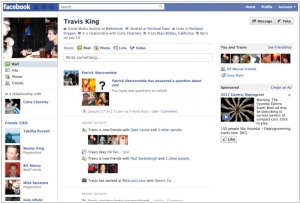Facebook Ads vs Google Ads
November 03, 2023 | Author: Sandeep Sharma
18
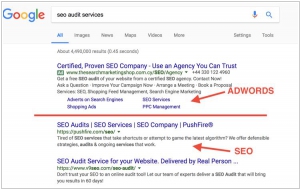
Google Ads (former Adwords) is an online advertising service that places advertising copy at the top or bottom of, or beside, the list of results Google displays for a particular search query. The choice and placement of the ads is based in part on a proprietary determination of the relevance of the search query to the advertising copy.
Facebook Ads and Google Ads are two popular online advertising platforms with distinct features and targeting capabilities.
Facebook Ads allows advertisers to reach a large audience through the Facebook platform and its affiliated apps like Instagram. It excels in demographic and interest-based targeting, enabling advertisers to reach specific user groups based on their interests, demographics, behaviors, and connections. Facebook Ads also offers sophisticated ad formats, such as dynamic ads and carousel ads, that allow businesses to showcase their products or services in a visually appealing manner.
On the other hand, Google Ads, formerly known as Google AdWords, focuses on search engine advertising and display network advertising. It allows advertisers to display their ads on Google search results pages, partner websites, and apps. Google Ads is renowned for its keyword targeting capabilities, enabling businesses to target users actively searching for relevant products or services. It also offers remarketing options, allowing advertisers to target users who have previously interacted with their website or shown interest in their offerings.
See also: Top 10 Online advertising services
Facebook Ads allows advertisers to reach a large audience through the Facebook platform and its affiliated apps like Instagram. It excels in demographic and interest-based targeting, enabling advertisers to reach specific user groups based on their interests, demographics, behaviors, and connections. Facebook Ads also offers sophisticated ad formats, such as dynamic ads and carousel ads, that allow businesses to showcase their products or services in a visually appealing manner.
On the other hand, Google Ads, formerly known as Google AdWords, focuses on search engine advertising and display network advertising. It allows advertisers to display their ads on Google search results pages, partner websites, and apps. Google Ads is renowned for its keyword targeting capabilities, enabling businesses to target users actively searching for relevant products or services. It also offers remarketing options, allowing advertisers to target users who have previously interacted with their website or shown interest in their offerings.
See also: Top 10 Online advertising services
Facebook Ads vs Google Ads in our news:
2023. Meta debuts generative AI features for advertisers
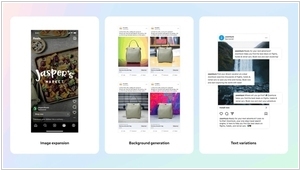
Meta is introducing its initial generative AI capabilities designed for advertisers. These features empower advertisers to employ AI for tasks such as crafting backgrounds, enlarging images, and generating multiple versions of ad text derived from their original content. These new offerings exemplify Meta's belief in the potential of generative AI to aid the brands and enterprises that contribute significantly to Meta's revenue stream. The first feature in this trio enables advertisers to personalize their creative assets by producing diverse backgrounds, transforming the appearance of their product images. This functionality is akin to Meta's consumer-oriented tool, Backdrop, which permits users to modify their image's setting or background through prompts. Another feature, image expansion, enables advertisers to adapt their assets to various aspect ratios needed for different products, such as Feed or Reels. Moreover, within Meta Ads Manager, the text variations feature utilizes AI to generate up to six distinct text versions based on the advertiser's original content.
2018. Adwords rebrands as Google Ads, adds AI for small business
In July, Google's ad service, AdWords, will undergo a transformation and be known as Google Ads. However, this change involves more than just a rebranding. Google is introducing a new feature called Smart Campaigns, which will serve as the default mode for advertisers. Smart Campaigns empower advertisers to specify the actions they prioritize, such as phone calls, store visits, or purchases. Leveraging machine learning, Google Ads will then optimize images, text, and targeting strategies to generate a higher volume of these desired actions. This enhancement aims to enhance advertisers' overall campaign performance and effectiveness.
2016. Facebook tests ads in Groups
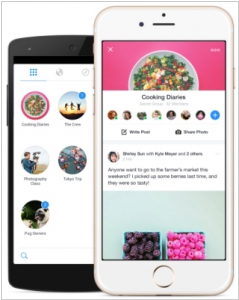
Facebook is set to introduce advertisements to its Groups feature, reaching its 1 billion user base. These ads will adopt the same appearance as News Feed ads and will be targeted based on both Group topics and standard identity-based targeting. The diverse range of purposes that Groups serve can significantly enhance the value of these ads. By effectively categorizing Groups and refining ad targeting, Facebook can deliver highly relevant and profitable ads to individuals with varied interests. For instance, if someone has indicated their affinity for the Manchester United football team by liking their Page, it suggests a likelihood of their interest in purchasing sports merchandise. This capability to target specific interest groups opens up opportunities for advertisers to reach their intended audience with precision and increase the effectiveness of their campaigns.
2015. Google Adwords will allow to target customers by email
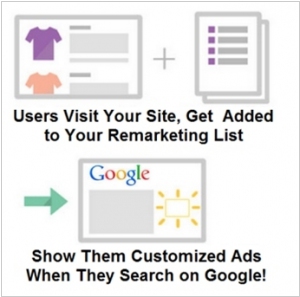
Google Customer Match introduces a fresh approach to connecting with your most valuable customers across Google Search, YouTube, and Gmail. This innovative product enables you to upload a list of email addresses, which are securely and privacy-consciously matched with signed-in Google users. Subsequently, you can create targeted campaigns and advertisements tailored to engage your specific audience. Users retain control over the ads they encounter, including Customer Match ads, by opting out of personalized ads or utilizing the options to mute or block ads from specific advertisers through Google Ads Settings. Additionally, Customer Match offers the opportunity to expand your customer base by showcasing ads to potential customers who share similar interests with your rewards members while they browse YouTube and Gmail.
2015. Google testing mobile ads with images
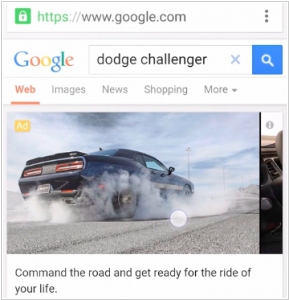
Google is introducing a change to its mobile phone Google Ads by replacing some of the text-only ads with visually enhanced photo versions. These new visual ads, currently available for car-related searches such as the Dodge Challenger, offer users the ability to browse through photos, gather product information, and make reservations directly from the search screen. This represents a significant departure from the text ads that tend to blend in with the overall search results. To cater to car buyers who are closer to making a purchase, Google is also providing franchise auto dealerships with improved location-based ads that include a click-to-call button and directions to their stores. A beta version of these ads is being made available this week. Brands that opt not to pay for the upgraded auto ads will still have the option to stick with the traditional text-only listings. While Google's mobile search results already display click-to-call phone numbers, directions, and occasional images for various business or product searches, these updates will offer companies greater opportunities to customize the user experience of their search results like never before.
2015. Facebook partners with IBM to make ads targeting easier for big brands
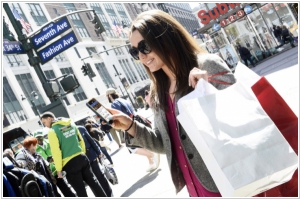
Facebook and IBM have jointly announced a collaboration that brings together their advertising tools and experts to assist large companies in tailoring their marketing strategies for customers. This partnership aims to enhance the relevance of ads presented to individuals. For instance, advertisers can leverage IBM's data to identify specific customer segments for targeted marketing campaigns through email and Facebook. Alternatively, a sports brand could collaborate with IBM and Facebook to deliver real-time Facebook ads to customers attending a game, leveraging IBM's location data. This collaboration enables both Facebook and IBM to strengthen their relationships with major advertisers. Additionally, it serves as an incentive for IBM's Fortune 500 clients to engage more closely with Facebook, which seeks to expand its advertising revenue. Simultaneously, IBM gains access to the vast amount of consumer data collected by Facebook, offering valuable insights for their marketing endeavors.
2015. Facebook launched automated Product Ads
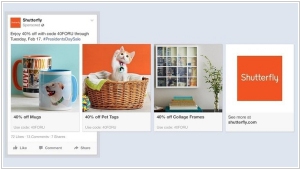
Facebook has introduced a new option called Product Ads, which comprises a suite of tools designed to enhance businesses' targeting capabilities on its platform, reaching its vast user base of approximately 1.4 billion individuals through an automated process. With Product Ads, businesses can upload their product catalogs to Facebook and either manually create ad campaigns or allow Facebook to automatically generate campaigns that target specific user segments. Facebook's automated approach leverages factors such as user interests, general location, and previous interactions with the advertiser's app or website to optimize ad performance. This feature is particularly advantageous for businesses with extensive inventories of appealing products, such as furniture chains or clothing franchises, as it increases the likelihood of users discovering and purchasing items.
2014. Facebook launches hyper-local ads
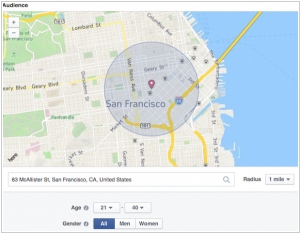
Facebook Ads has introduced a new hyper-local targeting feature aimed at enticing people to visit nearby stores and businesses. This update enables brick-and-mortar establishments to specifically target their ads towards individuals who either reside in or have recently been in close proximity to their stores. Advertisers have the flexibility to set a radius as small as a mile, and the ads will be displayed on users' mobile phones or web browsers. These Local Awareness ads will initially be available to business owners in the United States within the next few weeks, followed by a global rollout over the next several months. With over 1 billion mobile users on Facebook, a significant number of whom provide location access, along with desktop users who willingly share their current city or can be identified through IP addresses, the platform possesses extensive reach. Moreover, the recent introduction of the ambient proximity feature called Nearby Friends allows Facebook to access real-time location data from some users in the United States.
2014. Facebook takes on Google AdWords with Atlas
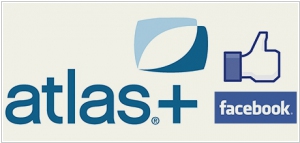
Facebook has recently launched a new advertising platform called Atlas that aims to target users on any website by utilizing their Facebook information. Atlas was acquired by Facebook from Microsoft last year. The platform is designed to rival Google's AdWords, enabling advertisers to display ads that track users across the web and mobile devices. Advertisers have the option to purchase ads on external websites and apps, with the choice of incorporating the Facebook social network. Instead of relying on cookies, Facebook will utilize the user's Facebook login details. While this move may not be well-received by Facebook users, it provides an alternative for advertisers and serves as competition to Google AdWords.
2014. Adwords adds free dynamic sitelinks
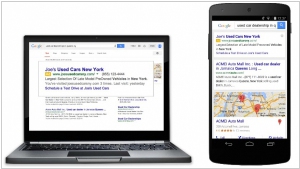
Google Adwords is introducing a worldwide rollout of dynamic sitelinks, which are automatically generated sitelinks displayed beneath your ad text. These dynamic sitelinks aim to enhance user experience by providing easier access to relevant pages on your website. According to Google, the inclusion of sitelinks improves ad relevance and the overall user experience after clicking on the ad. Notably, clicks on dynamic sitelinks are free of charge. However, advertisers will still incur charges for clicks on the ad headline and other ad extensions. Although dynamic sitelinks generally enhance ad performance, advertisers have the flexibility to disable them if desired.

